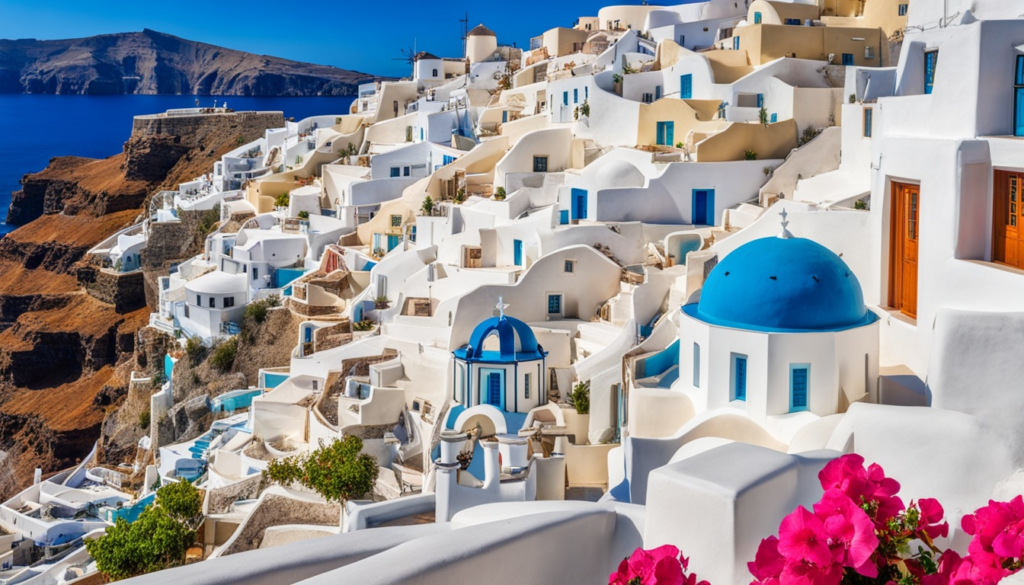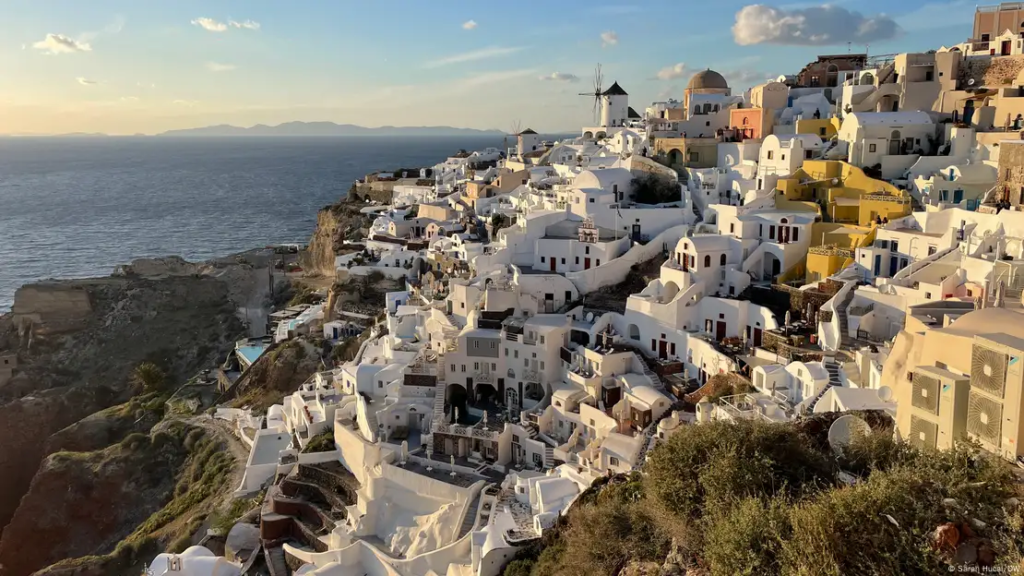Santorini, one of Greece’s most famous tourist destinations, has recently witnessed a surge in seismic activity, raising concerns about a possible volcanic eruption.
Situated in the Aegean Sea, Santorini is known for its breathtaking white-washed buildings, stunning sunsets, and unique geological history. However, its past is deeply tied to volcanic activity, with the massive Minoan eruption around 1600 BC shaping the island’s caldera.
The recent tremors have reignited discussions about the potential risks posed by the volcano and whether Santorini is in immediate danger of an eruption. While authorities and experts continue to monitor the situation, they have reassured the public that there is no imminent threat.
A Surge in Seismic Activity and Growing Concerns
In recent weeks, monitoring stations have detected at least 39 earthquakes in a single day in Santorini’s caldera, with most quakes measuring below magnitude 3.5.
This sudden increase in seismic activity has led to speculation about whether the volcano is reawakening. Greece’s Climate Crisis and Civil Protection Ministry held an urgent meeting to assess the situation, as even a minor geological shift could impact tourism and local livelihoods.
Santorini’s volcano is part of the Hellenic Volcanic Arc, an area known for its seismic and volcanic activity. Although the most recent eruption on the island occurred in 1950, the region has a long history of periodic activity.
The 2011-2012 seismic swarm, for instance, caused similar concerns, but no eruption followed. Experts believe that while the recent earthquakes indicate geological movement, they do not necessarily mean an eruption is imminent.
Read : Greece Royal Family Applies for Citizenship 50 Years After Being Dethroned
Seismologist Efthymios Lekkas, who heads the scientific monitoring committee for the Hellenic Volcanic Arc, explained that the volcano is a “living organism” that naturally undergoes cycles of activity and dormancy.
Read : Nature’s Masterpieces: Unveiling the Top 10 Most Beautiful Islands
He reassured that Santorini is not on the brink of a major eruption, as the island experiences powerful eruptions roughly every 20,000 years. Since the last significant eruption occurred around 3,000 years ago, it is unlikely that a catastrophic event will occur in the near future. However, smaller eruptions or mild volcanic activity remain possible, requiring ongoing monitoring.
Understanding Santorini’s Volcanic History and Risks
Santorini’s geological formation is a direct result of volcanic activity. The Minoan eruption around 1600 BC is considered one of the largest eruptions in human history, leading to the collapse of the central part of the island and forming the present-day caldera.
This event had widespread consequences, including massive tsunamis and climatic disruptions, which some theories suggest contributed to the decline of the Minoan civilization on Crete.
Following the Minoan eruption, Santorini has experienced multiple smaller eruptions, the most recent occurring in 1950. The island’s volcano is classified as active but not highly explosive in the short term.

The magma chamber beneath Santorini has shown signs of expansion in previous years, particularly in 2011-2012, when ground deformation and minor seismic swarms were detected. These incidents, however, did not lead to an eruption, reinforcing the idea that such geological changes do not always result in volcanic activity.
Despite its active status, Santorini’s volcano does not pose an immediate threat to residents and tourists. Scientific data suggest that while minor tremors and ground movements indicate ongoing underground activity, they do not signal an impending eruption.
Nonetheless, experts remain vigilant, as any significant changes in magma movement or gas emissions could indicate a shift in volcanic behavior.
Monitoring and Preparedness: The Role of Science and Authorities
Given Santorini’s history and the recent uptick in seismic activity, Greek authorities and scientific institutions are closely monitoring the situation.
The National Observatory of Athens, along with international volcanologists, continues to analyze data from sensors placed around the caldera. These instruments measure ground deformation, gas emissions, and seismic patterns, providing valuable insights into the volcano’s behavior.

Authorities have emphasized the importance of preparedness while maintaining that there is no cause for immediate alarm. Regular safety drills, evacuation plans, and public awareness campaigns ensure that both residents and tourists are informed about potential risks and safety measures.
The Greek government has also invested in improving monitoring technology to detect any early warning signs of volcanic unrest. Tourism, which plays a crucial role in Santorini’s economy, remains unaffected for now.
Local businesses and travel agencies continue to operate normally, while visitors are advised to stay informed about any updates from authorities. The recent tremors serve as a reminder of Santorini’s dynamic geological nature, but they do not necessarily indicate a disaster in the making.
While Santorini’s seismic activity has increased in recent weeks, scientific assessments suggest that the island is not at immediate risk of a volcanic eruption. The history of the Santorini volcano shows that it undergoes long dormancy periods between major eruptions, and experts believe there is still a significant amount of time before the next major event.
However, continuous monitoring is essential to detect any potential changes in volcanic activity. For now, Santorini remains a breathtaking travel destination, where natural beauty and geological history coexist in a delicate balance.

